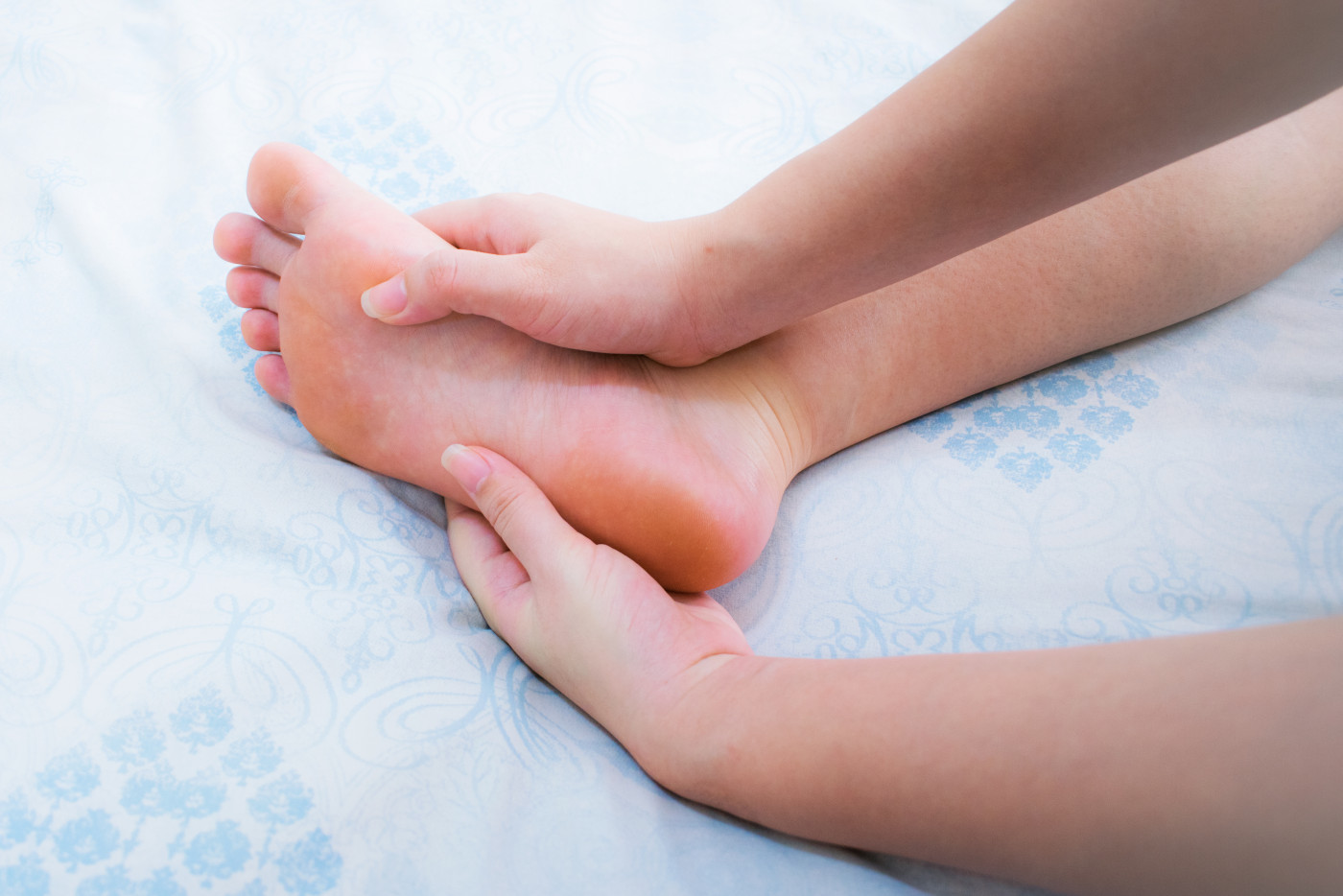Tendon Transfer Surgery May Minimize CMT-related Foot Drop, Study Suggests

Foot drop in Charcot-Marie-Tooth disease may be corrected by transferring the end part of specific leg muscles to the midfoot region, researchers report.
The study, titled “Extensor Tendon Transfers for Treatment of Foot Drop in Charcot-Marie-Tooth Disease: A Biomechanical Evaluation,” was published in Foot & Ankle International.
Charcot-Marie-Tooth (CMT) disease often leads to deformity of the feet and toes, due to an imbalance in muscle strength. For instance, foot drop is caused by weakness or paralysis of muscles below the knee, which are involved in lifting the front of the foot, leading to the dragging of the foot on the ground while walking.
In CMT, there’s selective weakness of a muscle called tibialis anterior, the largest front leg muscle located below the knee, meaning patients have difficulty performing ankle dorsiflexion, or the backward bending and contracting of the foot when walking.
This forces the body to find a replacement for the weakened muscle, usually the extensor hallucis longus (EHL) and extensor digitorum longus (EDL), which in due time causes the toes to acquire a claw-like (contracted) shape.
“There is no consensus for the best technique to improve ankle dorsiflexion strength in CMT patients,” the authors wrote. One such strategy may be the transfer of the EHL and EDL tendons — tissue that attaches muscle to bone, thereby transmitting the mechanical force of muscle contraction to the bones — into the midfoot or forefoot.
This procedure has been shown to increase ankle dorsiflexion and toe extension, and minimize toe clawing. However, the optimal site for tendon transfer is yet to be determined.
Researchers at Cedars-Sinai Medical Center in Los Angeles set out to quantify ankle dorsiflexion in surgically intact lower leg and feet, compared with two distinct tendon transfers.
To do so, they used eight fresh-frozen half lower legs (including the feet) from cadavers (four women and four men; mean age of 47.4 years) without any neurodegenerative changes or “mechanical problems” in ankle and hindfoot dorsiflexion.
Before any surgical procedure, the researchers performed their mechanical function analysis on the surgically intact feet by placing the specimens in a vertical position (i.e. mimicking the legs hanging down from a high chair), into a specialized jig with the ankle tilted 20 degrees down, like in a foot-drop scenario. This set-up was designed to make the feet mechanically reproduce dorsiflexion.
EHL and EDL tendons were then isolated and connected to either metatarsal bones, located in the forefoot bear, or cuneiform ones, anatomically situated behind the metatarsals. The apparatus was tested five times in all tendon transfers. After that, “tendons were tested at 25%, 50%, 75%, and 100% of maximal physiologic force for the EHL and EDL muscles, individually and combined,” the team said.
Results revealed that both types of tendon transfers significantly improved ankle dorsiflexion, in comparison to the surgically intact specimens.
“Whether the EDL and EHL tendons were loaded individually or simultaneously, there were no significant differences in ankle dorsiflexion between metatarsal or cuneiform transfer location at any load,” the researchers said.
A quarter of combined maximal muscular force from EHL and EDL was required to achieve a normal (neutral, meaning without the 20-degree angle) foot position. Moreover, either EHL or EDL alone achieved greater dorsiflexion compared with the tendons’ original location.
While there were no functional differences in the end result of both types of tendon transfers, the transfer into the cuneiform bones was a much easier and less-time consuming procedure.
“We believe the power of the long toe extensors has been underutilized in CMT surgery,” the authors stated. “EHL and EDL transfers can be used not just for the treatment of claw toes, but also to significantly augment ankle dorsiflexion power in a CMT patient with drop foot.”
Because the Charcot-Marie-Tooth disease-related “claw” toe deformity is mostly a compensatory mechanism of the body’s skeletal muscle inability, tendon transfer has the additional advantage of minimizing such deformity, they said.





